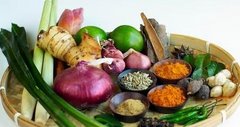What is Kimchi? Kimchi is a fermented cabbage dish and is a staple of Korean food served alongside many dishes to add flavour and vibrant. A wide selection of seasonings are used, including gochugaru (Korean chili powder), spring onions, garlic, ginger, fish sauce and daikon. Kimchi is also used in variety of soups and stews.
This mixture is then lacto-fermented so that it develops a pleasant acidity and keeps longer. Kimchi usually takes 1-2 days to ferment at room temperature or several days in the fridge. Kimchi is low-calorie, packed with probiotics and nutrients, and contains many antioxidants. It is said kimchi may help boost your immune system and improve digestion. Because of the health benefits and the deliciously spicy taste, fermented cabbage is becoming more and more popular in many cuisines all over the world.
Why Kimchi is not vegan? As we all thought, the ingredients are vegetables, and that should make it vegan. The process that it goes through does not include any relation to animal use as well. However, kimchi is not vegan. It is because traditional kimchi call for fish sauce which heightens the flavour and makes it extra tasteful. The seafood ingredient are not part of vegan diet, which makes kimchi not vegan. Just swaps fish sauce for miso paste for the ultimate umami-packed animal product-free condiment or side dish.
Ingredients:
- ½ cup salt
- 1 medium chinese cabbage/napa cabbage, about 1.5kg
- ¼ cup gochugaru
- 6 garlic cloves
- 1 tbsp freshly grated ginger
- ½ medium pear, peeled and cored
- 3 tbsp gochujang
- 2 tbsp red or white miso paste
- 1 medium daikon (about 500g), sliced into thin strips
- 6-7 spring onions, cut into 1 inch pieces
Method:
Place 4 cups water into a large stock pot and place it over high heat. Bring the water to a simmer, then remove the pot from heat.
Stir in salt into the water until dissolved, then stir in an additional 8 cups of cold water.
Next, clean and chop the cabbage into 2-3 inch pieces, discarding the stem.
Test the temperature of the salt water to ensure that us is no longer hot. If it is, you can add a bit more cold water or wait to cool.
Add the cabbage to the pot and push it down to submerge. You can add up to another 4 cups of water if needed.
Allow the cabbage to soak in the salt water for 8-12 hours.
After the cabbage has soaked, drain it into a colander and rinse it well under cold water to remove any excess salt. Allow the cabbage to sit in the colander and drain for at least 30 minutes.
While the cabbage drains, make the paste. Place the gochugaru, garlic, ginger, pear, gochujang and miso paste into a food processor or hand blender and blend into a paste. You can add up to ½ cup of water to help this process, if needed.
Place the cabbage, daikon and spring onions into mixing bowl and add the paste. Stir well until all the ingredients are combined. You can dig in with your hands, but be sure to wear a gloves if you do.
Pack the kimchi into fermentation containers, like a glass jar, leaving at least an inch of headspace at the top. Push the vegetables down as best as you can to get them below the level of liquid.
Allow the kimchi to ferment at room temperature for 3-21 days, opening the containers to release built up gasses at least once per day, or more often in warmer conditions.
When the kimchi is as sour as you want it to be, transfer the containers to fridge for storage.








No comments:
Post a Comment